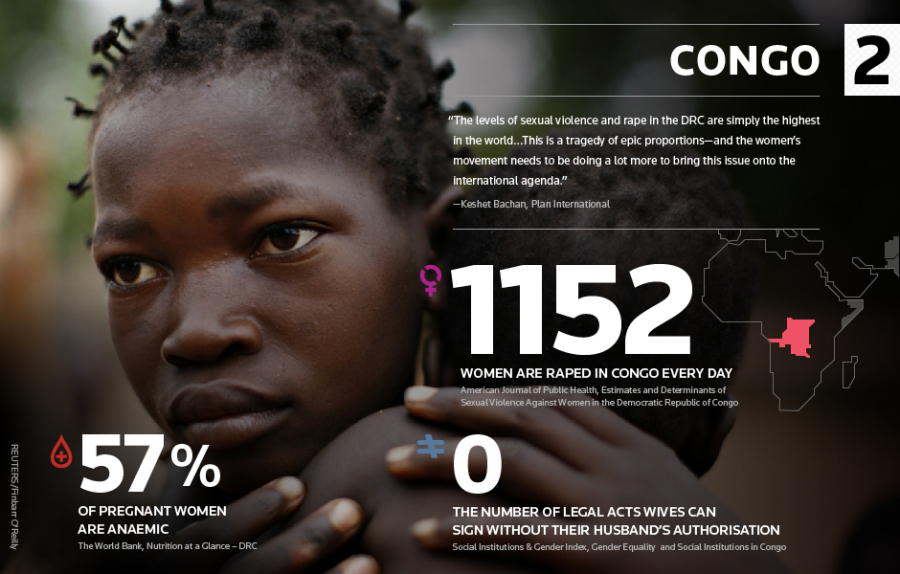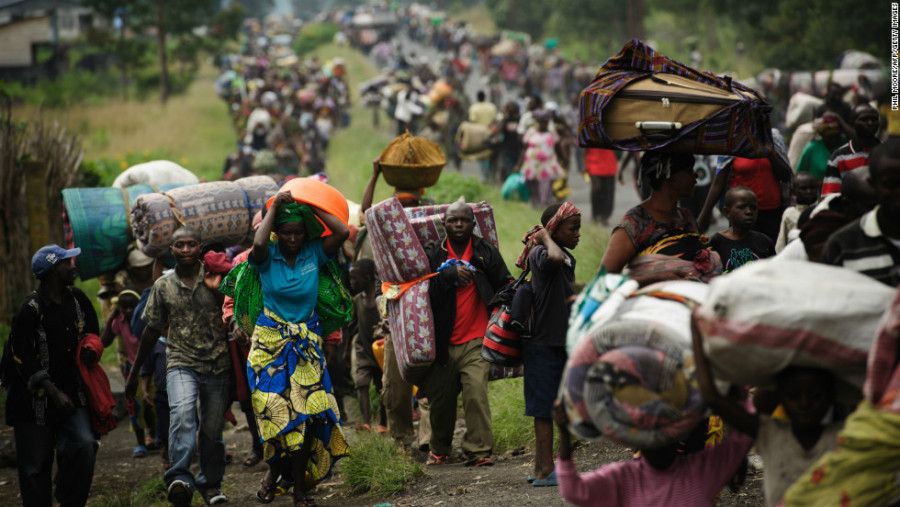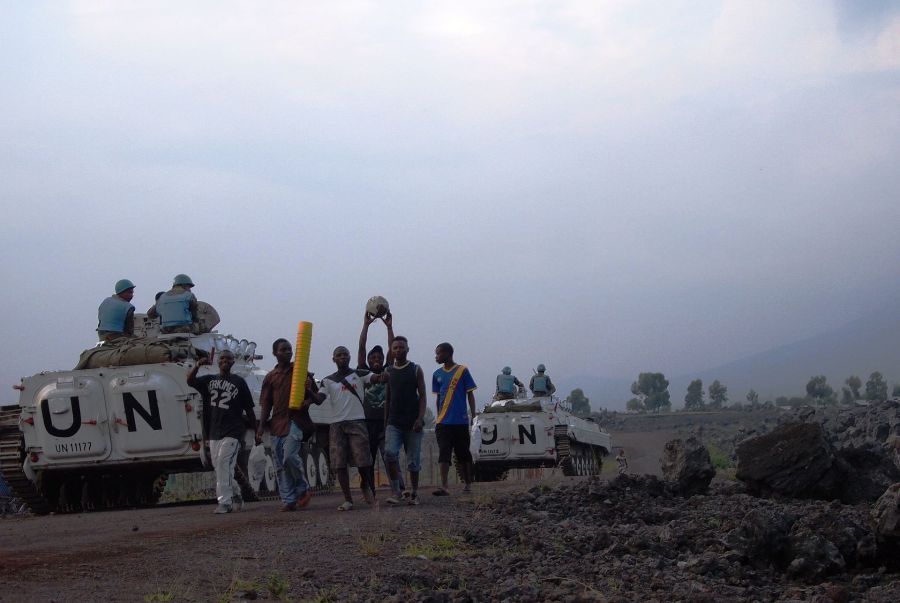A long path to equality
In the Democratic Republic of Congo (DRC), an estimated 400,000 women are raped every year. The prevalence and intensity of sexual violence cannot be understated, and now, it appears that the failures of the international community to curb rape’s use by the various sides of the Congo Civil Wars has allowed it to permeate into domestic life. The return of battle-hardened and scarred soldiers has embedded unhealthy attitudes towards women, sex and gender roles that continues to hinder the country’s path towards healing and economic development.
The international community has largely ignored the underlying drivers of this systemic cultural normalization of rape. Whilst the UN and various NGOs have deployed across the DRC with the backing of more than 20,000 peacekeepers, they are being overwhelmed by a crisis that sees more than 48 women raped every hour, under some estimates.
The International Federation of Human Rights reports that ineffective domestic laws and weak international conventions are to blame. “Rape and other crimes of sexual violence continue to be committed on a massive scale”, particularly in the conflict situations like those found in eastern Congo.The highly acclaimed Feminist writer, journalist and activist Margot Wallstrom has proclaimed that the eastern Congo is now “the most dangerous place on earth to be a woman”.

Human Rights Watch defines sexual violence as “an act of a sexual nature by force, or by threat of force or coercion,” and rape as “a form of sexual violence during which the body of a person is invaded, resulting in penetration, however slight, of any part of the body of the victim, with a sexual organ, or of the anal or genital opening of the victim with any object or other part of the body.”
A bloody past:
The DRC has a long history of unrest and instability, with no truly peaceful and stable period since de-colonization. While sexual violence has always occurred in some capacity, the rates of sexual violence soared during the armed conflicts of the early 1990s when state control effectively dissolved and the people were left to the whim of the various warring groups.
The country’s instability can be traced back to its immediate history following de-colonization in 1960. President Mobutu Sese Seko, who would rename the country Zaire in 1971, ruling the nation through an autocratic and corrupt regime. Under Mobutu’s rule, sexual abuse was widely used as a method of torture.
Mobutu would rule until 1995, when refugees from the 1994 Rwandan genocide fled into the DRC to escape the killings. Hutu extremist militias were formed across the border, particularly in Kivu, the DRC‘s eastern-most region, bringing crime and violence into the DRC. This influx of militants and fighting in Burundi led to the First Congo War, and the end of Mobutu’s regime.
The fighting led into the Second Congo War, an equally as bloody and divisive conflict that raged between 1998 and only ended in 2006. The war drew in neighbouring countries, dividing the region between Congolese and Rwandan aligned forces in a war that would eventually claim an estimated 5.4 million deaths.
In spite of the war’s end, the killing has not stopped. Violence continues between the various militias who continue to fight for resources and territory with the government and each other. In 2007, a large faction of the government forces would mutiny to form the M23 rebels supported by Rwanda, occupying towns and cities in the east and continuing to use rape as a tool for terror.

By the Numbers:
The statistics are alarming. According to a study by the journal of the American Medical Association in 2010, an astounding 39.7% of women in the eastern region of the DRC have been exposed to sexual violence during their lifetime.
This violence is not limiting itself to gender nor age either. The same study found that at least 23.6% of men had gone through the same trauma though were far less likely to report the fact due to the extreme stigma and stigmatization they’d face. Perhaps most disturbing of all is the fact that the UNFPA reports that over 65% of victims during the past two decades were children. The vast majority of this percentage composed by underage girls, roughly 10% of those being under 10 years of age. Perhaps this explains why over 12% of children in the eastern part of the DRC do not even reach their first birthday.
Many child soldiers are recruited through refugee camps, and once inducted into militias, face extensive sexual abuse.
High rates of sexual violence against women may also overshadow other issues such that against boys and men. Despite evidence against women, men and children across the nation, the topic remains under-researched and under- resourced.

Systemic discrimination:
Congo’s problem lies within the systemic integration of sexism across all facets of society.
Most problematic, for example, is the fact that under Congolese law women have almost no rights. According to article 444 of the Congo Family Code, a wife “owes her obedience to her husband”. Marital rape is not considered a crime with almost no cases prosecuted, the problem is so large that the Research Directorate called domestic violence “very prevalent”.
While there is extensive evidence of the societal and individual ramifications caused by sexual violence, the government has been widely criticized for not doing enough to stop it. While Congolese law criminalized many forms of sexual violence, these laws are not always enforced.
For the Congo to begin the long path to healing, it is going to take a hell of a lot of work. half the problem lies in the fact that the government refuses to take the problem seriously as it prioritizes re-instituting its control, which is understandable. What NGOs and programs that there are on the ground are overwhelmed and in desperate need of support. If the international community wants to end these gut-wrenching statistics, they are going to need to commit more resources, people and experts to change national attitudes from the ground up.

